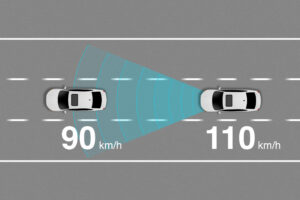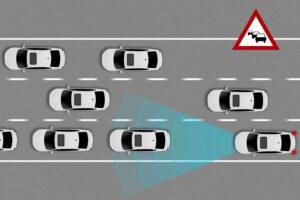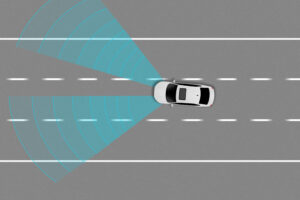Someday soon, self-driving cars will be a reality everywhere. But even before then, Smart Driving technology will have made them safer, greener and more connected. An important waypoint in that effort — Advanced driver assistance systems (ADAS) — is already a standard feature in many high-end vehicles and is rapidly filtering down into entry-level vehicles.
Safer driving
ADAS makes driving safer and more convenient by using networks of sensors and microcontrollers to make the provide information to the car, driver, and/or navigation system. These ADAS systems can detect pedestrians or vehicles, potential hazards, difficult road conditions and alert the driver and even take action, for example automatically braking in a dangerous situation. ADAS works by taking one or multiple sensor inputs (machine vision, radar, light, temperature etc.) and then processing the information to provide the driver with real-time driving support.
Examples include
Adaptive Cruise Control that automatically adjusts your car’s speed to maintain a safe distance from the car ahead. These systems reduce stress and make highway trips or commutes easier.

Automatic Braking Systems detect objects that may pose a threat. The systems react faster than humans and unlike people, don’t get distracted, so they can apply the brakes more efficiently and reduce the risk of accidents. Used in conjunction with adaptive cruise control, some cars can even stop and start in highway traffic jams.

Lane Departure Warnings are provided, either audibly or by vibration, to the driver when the vehicle unintentionally drifts off course.

Automatic Parking systems accurately measure the size of an adjacent parking space, confirm your car will fit, and manage servos—in real time through a microcontroller—to parallel park perfectly. Nearly every bumper on every car bears the scars of parallel parking—but we may be able to eliminate those scars in the future.
Beyond ADAS
Automatic cruise control, braking, and parking are just the beginning of the ADAS revolution. More advanced networked systems of sensors and microcontrollers in coming ADAS solutions will soon reduce traffic congestion, CO2 emissions, and more. Networked cars will communicate with each other and the road infrastructure to ease traffic congestion, regulate hybrid drive systems based on location, pay tolls, find parking, and turn driving hassles into pleasures, ultimately leading to fully autonomous vehicles.
To help create this safer world of transport, STMicroelectronics is working closely with leaders across the automotive spectrum to ensure they have the solutions and technologies perfectly suited to building your connected cars of the future.
For more information on STMicroelectronics automotive active safety ICs, including our ADAS solutions , click here
